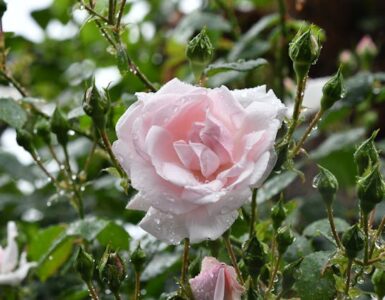Like the curved fists of the palms laid one after the other, the rolling hills present a view like no other. The serenity of the landscape, the shades of greenery, and the splendor of the valley add to the delight.
The Indian state of Nagaland is an amalgamation of myriad cultures and traditions, but a beautiful valley lying on the southern tip of the state adds another dimension to this region. Sharing the space with another Indian state, Manipur, Dzukou Valley is a paradise for any traveler and offers a panorama of a unique landscape.
Apart from the rich flora and fauna that Dzukou Valley offers, the gently undulating hills encircled by steep hills with a meandering water stream flowing through the valley attract thousands of people for its beauty.
Situated at the border of two Indian states Manipur and Nagaland at an altitude of 2438 meters, the valley is called “Dziiko” by the Mao Naga tribe of Manipur and “Dzukou” by the Angami tribe of Nagaland. The word Dzukou means cold water referring to the ice-cold stream that flows through the valley.
The valley is about 30 km from, Nagaland’s capital, Kohima, and more than 100 km from Manipur’s capital, Imphal, and is accessible from both states.
However, to reach the valley, a traveler must go through a long walk, trekking through the hills – Jakhama, Viswema in Nagaland, and Mao Gate in Manipur.
Details of the Dzukou Valley Trek
The route from Viswema in Nagaland is the most preferred route by travelers, as it has a motorable road almost reaching the highest peak of the Viswema hill range. Depending upon the fitness and skill of the trekker, it takes about 3 to 4 hours to reach the campsite of Dzukou, which includes about 2 hours of ascent followed by another 1.5-hour walk.
Walking to the Dzukou Valley is a trekker’s delight as it passes through stone boulders, broken barks of fallen trees, bamboo grass, and steep climbs.
The first part is a little tougher than the second part, as you climb your way through rocks, boulders, and steps. Once you reach the top of the hill, you can take some rest, click pictures, and have some snacks. The second part is comfortable as it is mostly flat and follows a narrow winding track amidst bamboo grass.
As is mentioned on one of the boards affixed on a tree en route, “The best view comes after the hardest climb”, this holds extremely accurate to describe the Dzukou Valley trek.
The picturesque view from the mountaintop is majestic and stunning. The place has a guest house, a small store selling some basic eatables, and also a place for camping. Facilities are managed by the local youth organization and availing them needs registrations.
After some rest, it is highly recommended to go to the lower part of Dzukou Valley, and depending on the season you go, you can find a corresponding view.
The valley comes alive after the rains as colorful flowers surround the entire landscape. You can also access some small caves and make a splash in the crystal-clear water of a meandering river. There is a cross set up by the local youth on a small hill, and climbing there can give a panoramic view of the valley.
The winter months of December and January are equally thrilling as the night temperatures can drop below zero, and you can wake up looking at the valley which will be engulfed in frost.

Flora and Fauna
As per the records, more than 25 varieties of flora can be found and more than 15 kinds of fauna inhabit the region, including the state bird of Nagaland – Tragopan blythii, Asiatic black beer, braking beer, and wild cats.
Between May and July, the Dzukou Valley is also called the “valley of flowers” as beautiful flowers of pink and yellow adorn the valley. Different types of lilies, rhododendron, aconitum, and other types of flowering plants can be found in the valley. The most prominent of them is Lilium mackliniae (Dzukou lily) which is found only in Dzukou Valley.
Additional Points to Note:
A trip to Dzukou Valley can be done any time of the year, but it is advisable to avoid the monsoon season as the wet route will make the journey tricky.
Carry a plastic bag and pick the garbage up to help the jungle get a little cleaner if you can pick up the litter that irresponsible trekkers have left behind and put it in the dustbin.
This valley is highly prone to forest fires and has had such incidences in 2006, 2010, 2012, 2015, and 2019. Therefore it is important to be extremely careful with the disposal of cigarettes and bonfires.
You can watch some breathtaking views of Dzukou Valley on our YouTube channel.






Add comment